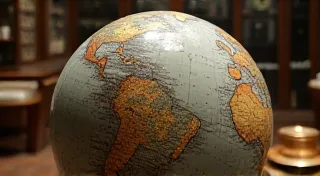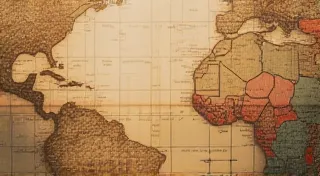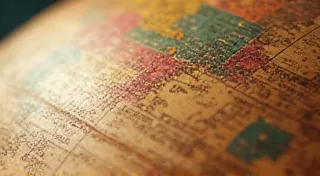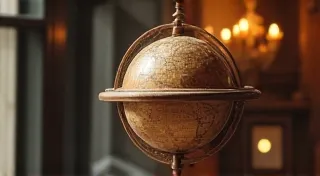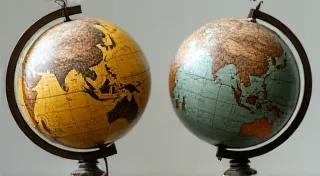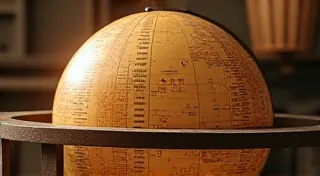The Materials of Antique Globes: Paper, Paint, and Construction
Antique globes are fascinating objects, blending artistry, science, and a glimpse into a bygone era. Understanding the materials that constitute these treasured collectibles is key to appreciating their construction and to accurately repairing or restoring them. This article will delve into the paper, paints, and construction methods commonly found in antique globes.
The Paper: Cartography on a Sphere
The most critical component of any globe is, of course, the paper upon which the maps are printed. While the specifics varied by manufacturer and period, certain characteristics are common. Early globes often utilized laid paper, so named for the distinctive ribbed pattern created by the paper-making process. This pattern, visible when held to the light, was a defining characteristic of paper production for centuries. The paper itself was typically made from linen or cotton rags, making it considerably more durable than modern wood-pulp paper. However, even with these qualities, paper degradation is a frequent challenge in globe restoration.
The paper weight could also vary. Globes destined for affluent customers might have featured heavier, more luxurious paper, while those intended for a broader market employed thinner stock. The color of the paper also played a role; earlier globes frequently used warm-toned papers, often with a slight beige or cream hue, which aged further over time. Examining the paper's characteristics is an important first step in assessing the globe’s age and originality. Understanding the common issues that arise from paper degradation is crucial for preservation; for those interested in techniques for addressing paper loss, you might find the article on Repairing Globe Paper Loss: Inpainting Techniques for Minimal Visibility helpful. Knowing how to mend tears in this fragile material is also essential – further details can be found in our guide on Repairing Globe Paper Tears: Techniques for Gentle Mending.
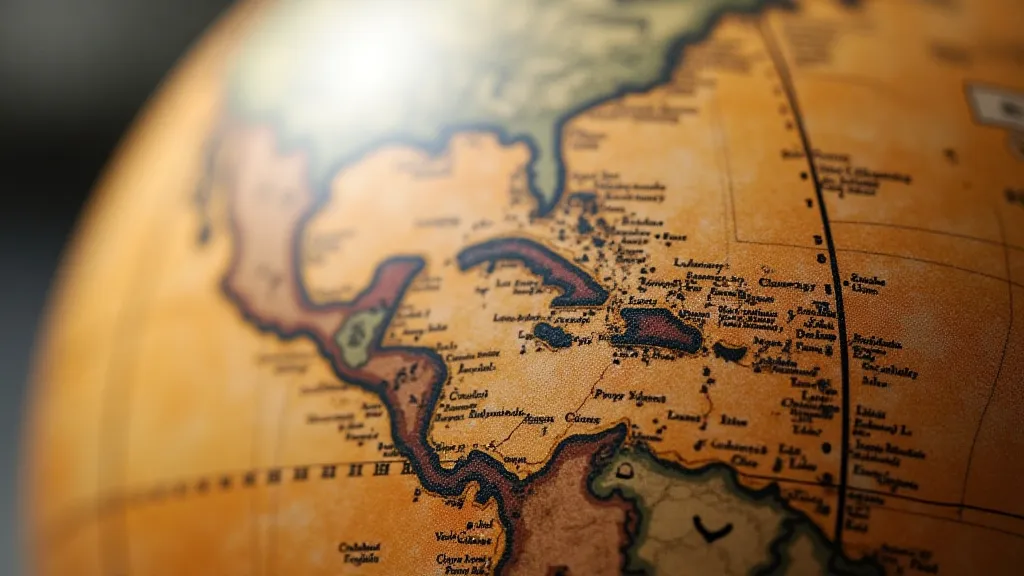
The Paints: Pigments and Application
The application of color to antique globes was a meticulous process. The pigments used were often derived from natural sources. Earth pigments like ochre, umber, and sienna provided a range of browns, yellows, and reds. Blues and greens were typically sourced from minerals like azurite and malachite, though these could be more expensive and less common. Later globes might incorporate early synthetic pigments, but natural pigments dominate in older examples.
The paints were generally applied in two ways: hand-coloring and printed color. Hand-coloring involved skilled artisans meticulously painting details onto the printed map, highlighting coastlines, borders, and key geographical features. This was a particularly important aspect of globes featuring detailed political or physical representation. Printed color, achieved through lithography or other early printing techniques, added broader areas of color, typically for shading and highlighting topographical features. The distinction between printed and hand-colored areas can often be discerned by careful examination, as hand-coloring tends to exhibit greater variation and artistic interpretation.
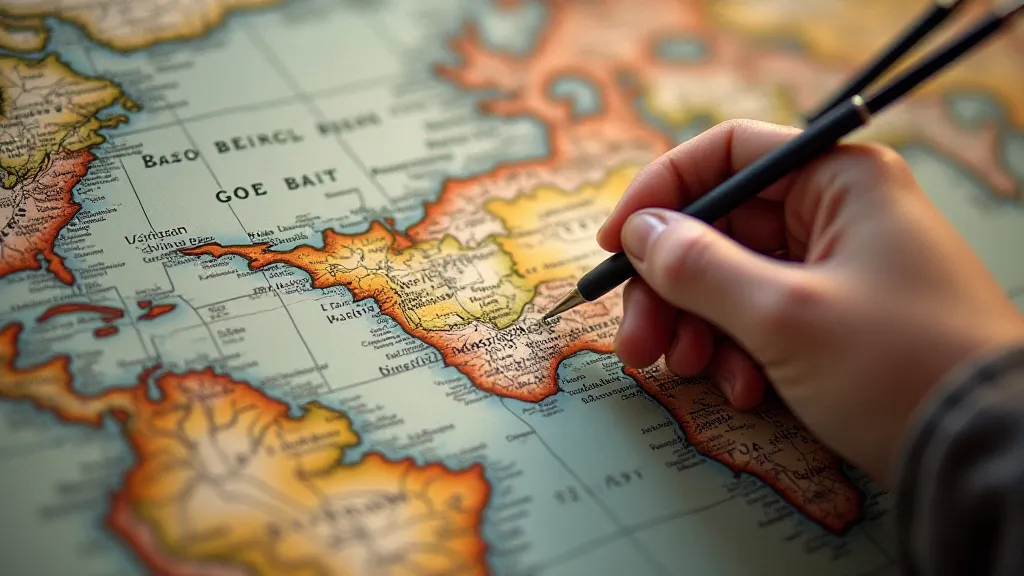
Construction: From Cartouche to Meridian Ring
The construction of an antique globe was a complex undertaking. Globes were traditionally constructed using twelve or fewer gores (wedge-shaped segments), each representing a portion of the Earth's surface. These gores were carefully joined together, usually with a pasted edge, and mounted on a papier-mâché armature. The quality of this armature varied widely, influencing the globe's overall stability and longevity. Understanding how map projections were adapted to this spherical form provides further context. The complexities of transferring a flat representation of the world onto a globe are fascinating, and explored in detail in our article on The Evolution of Map Projections on Antique Globes.
The globe was then typically supported by a meridian ring, a circular frame that allowed the globe to rotate around its axis. The meridian ring could be made from various materials, including wood, brass, or iron. The base, which provided stability, was often made of wood, and frequently elaborately decorated, again reflecting the globe’s intended market. The types of common damage seen in antique globes – cracking, warping, and discoloration – are also important considerations for collectors and restorers. We’ve detailed those issues and their possible causes in our guide to Common Globe Damage: Cracking, Warping, and Discoloration.
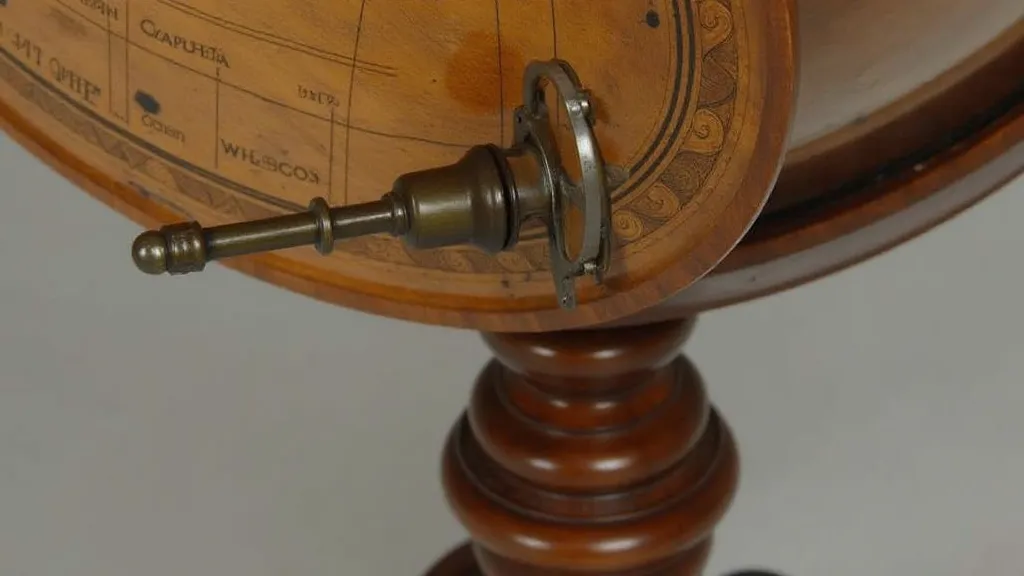
Materials in Detail: A Deeper Dive
Let’s consider each material more closely. The paper, as we's discussed, is a crucial element, directly impacting the globe's longevity and visual appeal. The specific type of paper used – whether it’s linen rag paper, cotton rag paper, or a less refined stock – can provide clues about the globe’s origin and intended market. Even seemingly minor variations in paper texture or color can be significant when assessing authenticity and condition.
The pigments used to color the maps were selected for their vibrancy and durability. While earth pigments were readily available and relatively inexpensive, they could be susceptible to fading or discoloration over time. More vibrant pigments, such as those derived from azurite and malachite, were often reserved for higher-end globes, reflecting the increased cost of materials. The way these pigments were applied - whether through meticulous hand-coloring or by more efficient printing techniques – also influenced the final appearance and value of the globe.
The construction materials, including the papier-mâché armature, the meridian ring, and the base, all contributed to the globe’s structural integrity and aesthetic appeal. The quality of the papier-mâché, in particular, was a key determinant of the globe’s long-term stability. A poorly constructed armature could lead to warping, cracking, and other forms of damage.
The Cartouche: A Window into History
The cartouche, often overlooked, is a fascinating element. More than just a decorative flourish, it contained vital information about the globe – the title, the publisher’s name, the date of manufacture, and sometimes even the cartographer’s signature. The style and typography used in the cartouche can provide valuable clues about the globe’s origin and age. Furthermore, analyzing the geographical details presented in the cartouche can reveal how the world was perceived and understood at the time of the globe’s creation.
Preservation and Restoration Challenges
Antique globes face numerous preservation and restoration challenges. Paper degradation, pigment fading, structural instability – these are just a few of the issues that collectors and conservators must contend with. Proper storage conditions – avoiding direct sunlight, high humidity, and extreme temperatures – are essential for slowing down the deterioration process. When restoration is necessary, it must be carried out with the utmost care, using techniques and materials that are compatible with the original materials.
Conclusion
Understanding the materials and construction of antique globes allows for a greater appreciation of the artistry, skill, and scientific knowledge involved in their creation. It also provides a vital foundation for responsible repair and restoration, ensuring these fascinating artifacts are preserved for future generations. From the carefully selected paper to the intricate hand-coloring and the sturdy construction, each element of an antique globe tells a story of a bygone era.
